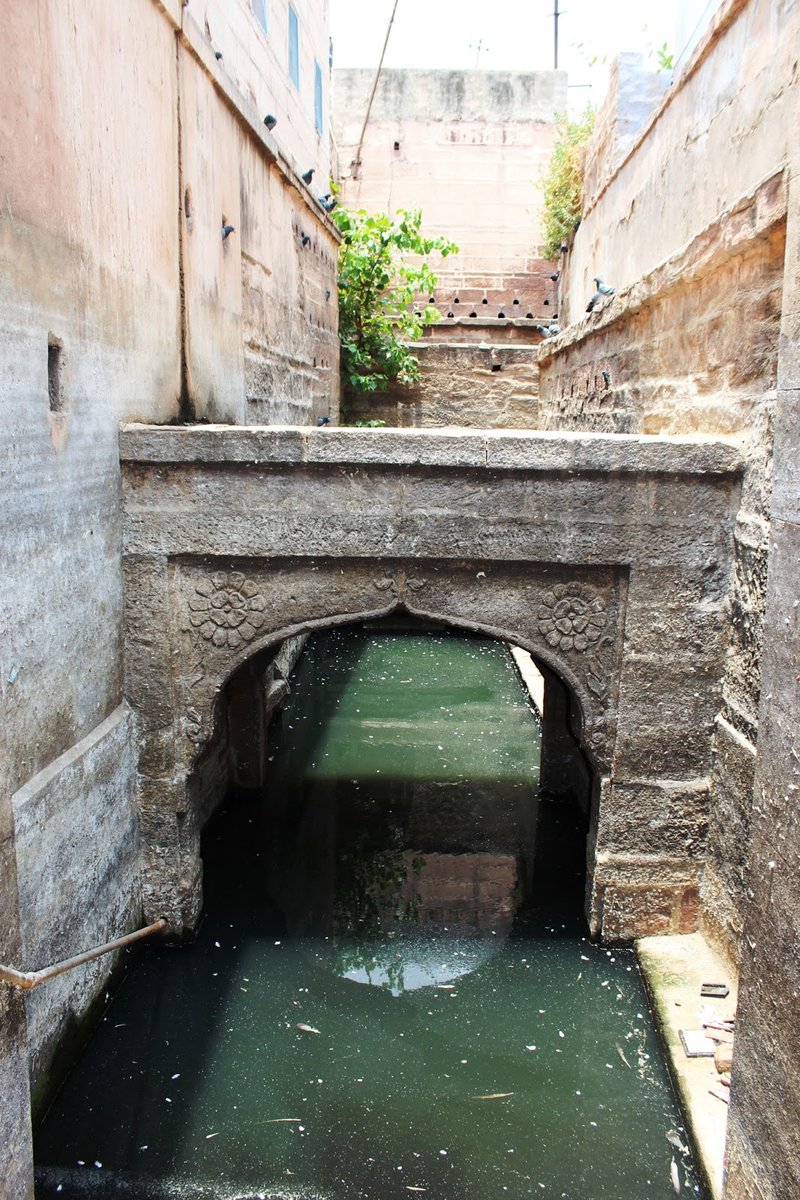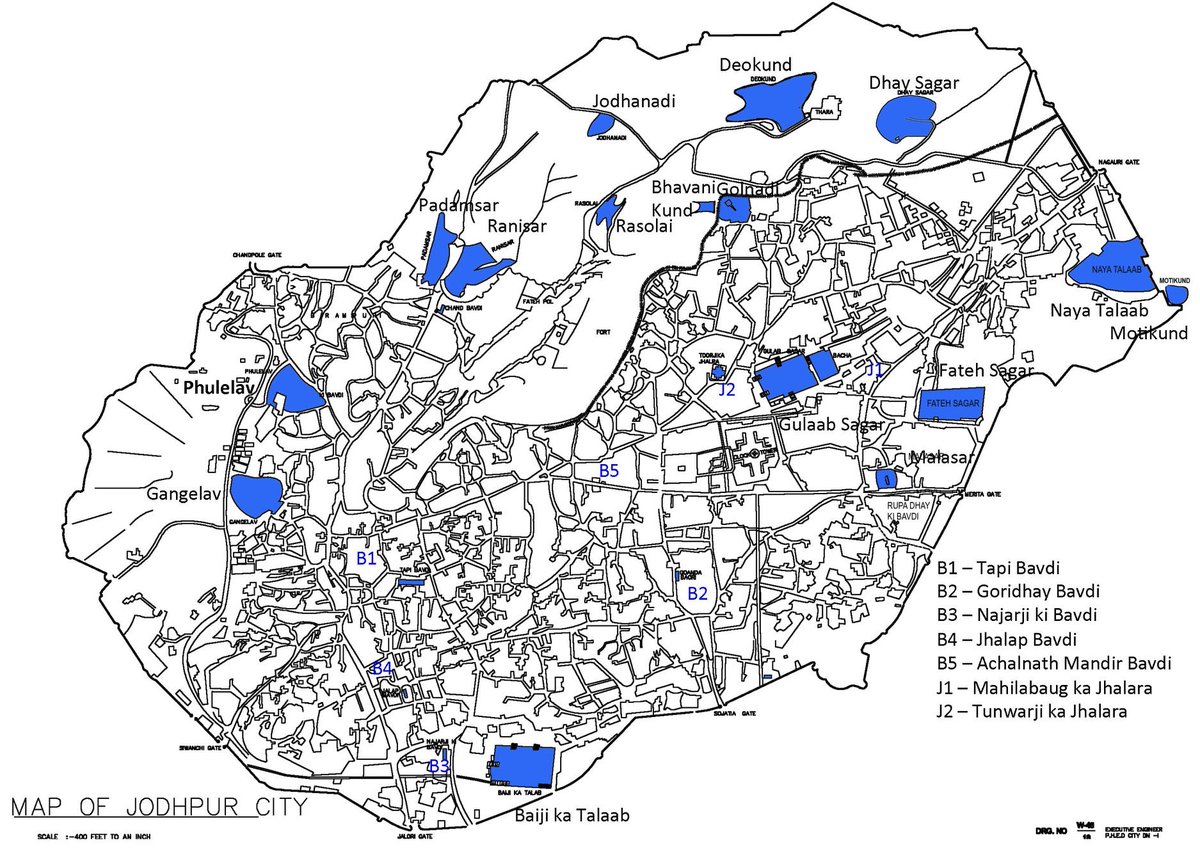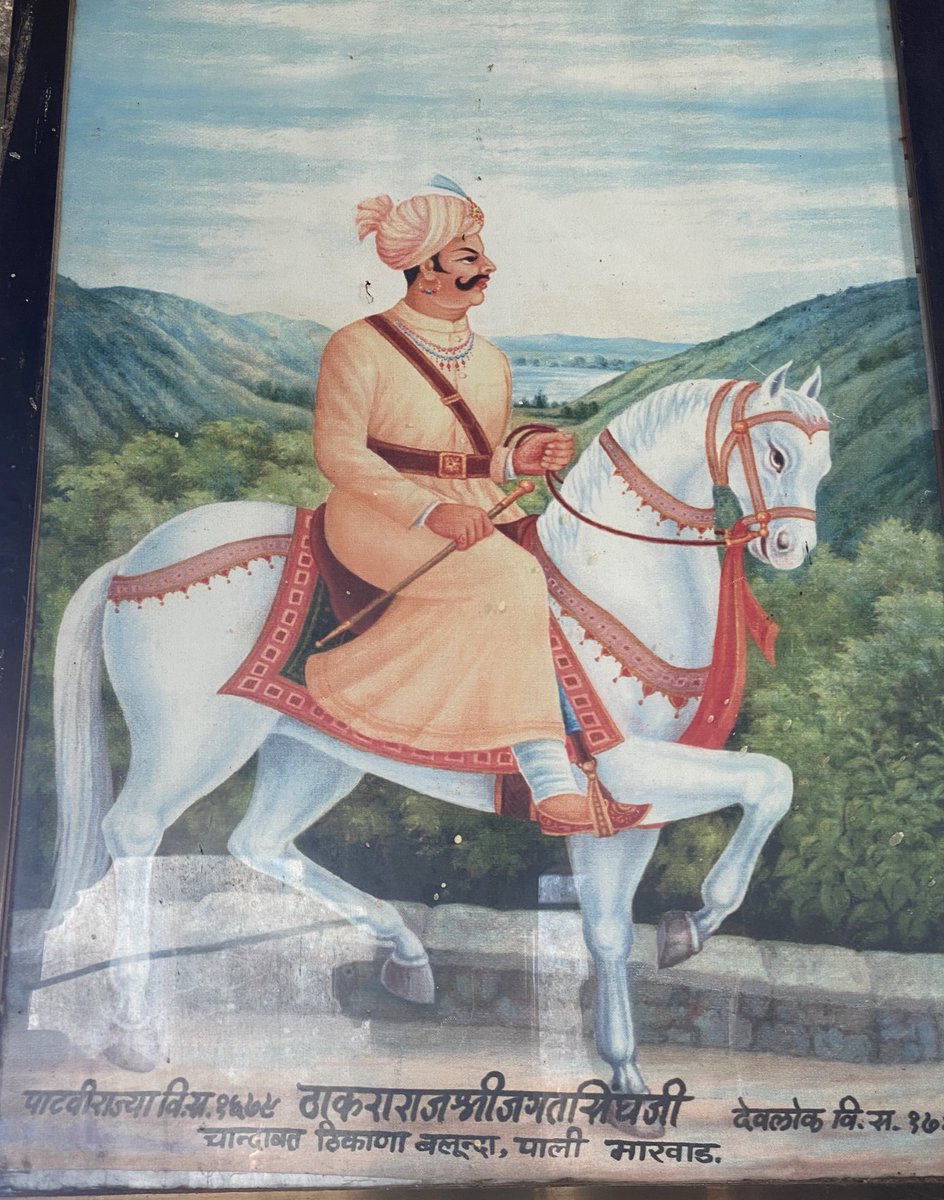In the land of #Marwar, as there are no perennial rivers or natural lakes available, people were dependent on the rains. Different ways were used to conserve water, which was a necessity to conserve every single drop of water.
Over centuries, Rulers of Marwar spent a lot of effort and money to build various types of water reservoirs. Ladies from ruling family spent their privy purses on works of water conservation, even common people did their part in this which is still considered as pious work.
People in #Marwar still donate and fill Pyaus for travellers, in temples and small water tanks (अवाळा) for animals in villages.
Many such reservoirs / tanks vanished over the period of time, some still exists. Just in #Jodhpur, of all the names mentioned in old records, there are currently around 48 Baoris, 8 Jhalra, 40 Talab or lakes, 98 open well and 25 naadis which have been located.
Jhalras are generally associated with religious uses such as the performance of pujas and funerary rites.
Naadis (नाडी) are ponds which stores water from natural catchment during the rainy season, water availability from a naadis ranged from 2 months to a year after the rains.
Naadis (नाडी) are ponds which stores water from natural catchment during the rainy season, water availability from a naadis ranged from 2 months to a year after the rains.
The oldest Baori in located Mandore, the old capital city of the Marwar, built in 784 AD.
Oldest naadi on record is Jodhnadi near Singhoriya Bhakri, built by Jodha Parihar in 1458 AD during the reign of Rao Jodha.
Oldest naadi on record is Jodhnadi near Singhoriya Bhakri, built by Jodha Parihar in 1458 AD during the reign of Rao Jodha.
BalSamand was built around 1159 AD by BalakRao Parihar and was used to preserve the rain water into it and to provide sufficient water for people of Mandore. It was widened by Rathore rulers and the Palace was built and renovated over the years. 

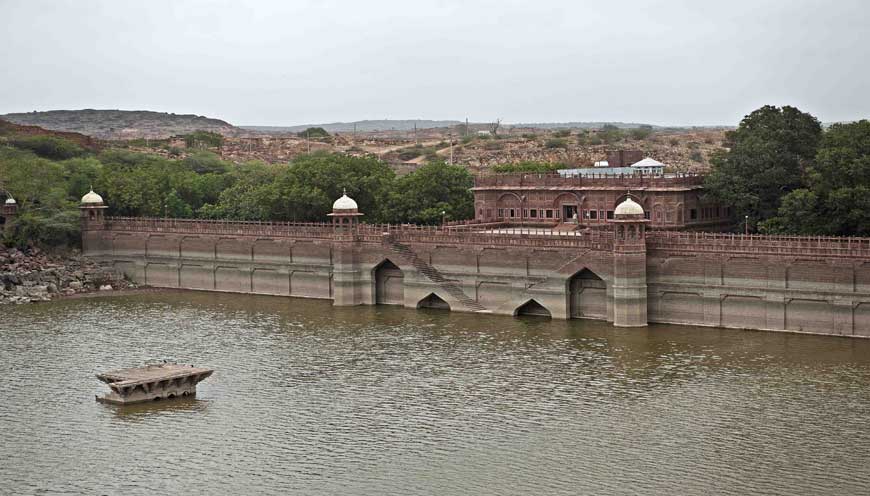
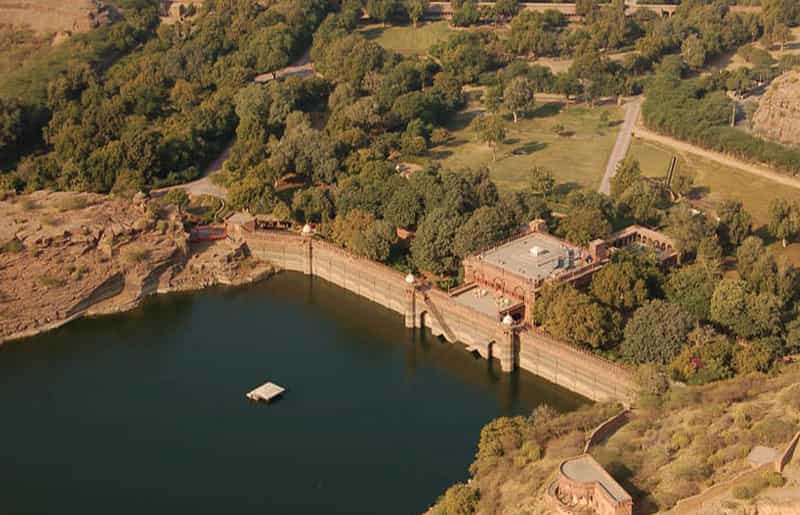
After Rao Jodha moved the capital to #Jodhpur, his Queen Hadi Jasmade commissioned RaniSagar now called Ranisar, near the fort in year 1459. Hadi Rani tasked Pancholi Sadasukh and she spent Rs. 20,251 to construct Ranisar. This was the first big tank in Jodhpur. 

Wells are also present in and around this tank, so when the tank dries up these wells can be used to fetch water. This tank was out of the fort premises at that time.
Later Rao Maldeo constructed wall to merge it within fort complex.
Ranisar on DevDeepavali
Later Rao Maldeo constructed wall to merge it within fort complex.
Ranisar on DevDeepavali
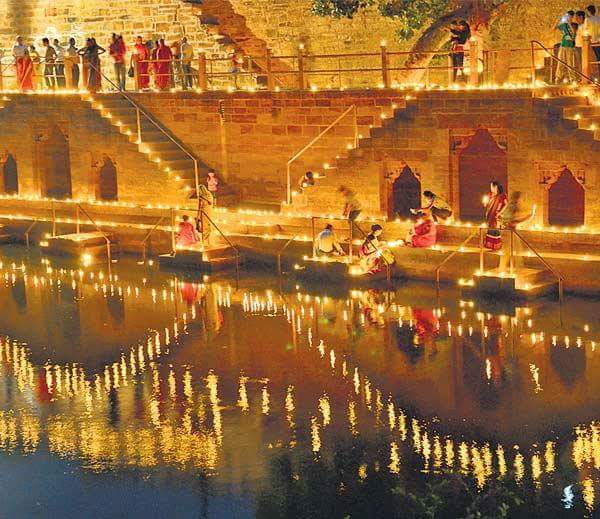
By use of 3 levels of rehat (persian wheel), water from Ranisar used to be supplied till Jai Pol, which is as high as 3 levels of building.
Water level of Ranisar and Jaipol at the left corner.
Water level of Ranisar and Jaipol at the left corner.

Jaita ka Bera (Well of Jaita)- Muhnta Jaita built during reign of Rao Jodha.
Nimba Shrimali Brahmin built Neemba ka Bera during reign of Rao Jodha, it is probably the smallest well in size in Jodhpur.
Kumhariya Bera - built by Kheema Kumhar during regin of Rao Jodha.
Nimba Shrimali Brahmin built Neemba ka Bera during reign of Rao Jodha, it is probably the smallest well in size in Jodhpur.
Kumhariya Bera - built by Kheema Kumhar during regin of Rao Jodha.
Rao Satal’s wife Phool Kanwar built Fulelao Talab.
Rao Ganga’s wife Padmini built Padamsar Talao. Ranisar’s overflow is directed in Padamsar Talao.
Rao Ganga built Gangelao Talao and Ganga Ki Bawari, which is next to Achaleshwar Mahadev Temple.
Padamsar (L) , Ranisar (R)
Rao Ganga’s wife Padmini built Padamsar Talao. Ranisar’s overflow is directed in Padamsar Talao.
Rao Ganga built Gangelao Talao and Ganga Ki Bawari, which is next to Achaleshwar Mahadev Temple.
Padamsar (L) , Ranisar (R)

Rao Maldeo built Imarti (Amrut) Baori, which was near Imarti Pol, Navsuria Well and tank near Dhuni of Chiriyanathji, which is generally called Pataliya Bera as it quite deep, Malasar Talao and a Baori near Balsamand.
Jharneshwar Mahadeo
Jharneshwar Mahadeo

Rao Maldeo’s queen Jhali Swarup De built Swarup sagar (on the left side while going from Kaga to Mandore), now called Bahuji ka Talao.
Sawai Raja Sur Singh built Sursagar lake, Surajkund, the hamam over Suraj Kund was completed by Raja Gaj Singh. Purani Baori built during his reign is now non-existent.
His queen Saubhagya Devi, built Saubhagya Sagar in Daijar.
SurSagar Lake(L), Palace (R)

His queen Saubhagya Devi, built Saubhagya Sagar in Daijar.
SurSagar Lake(L), Palace (R)
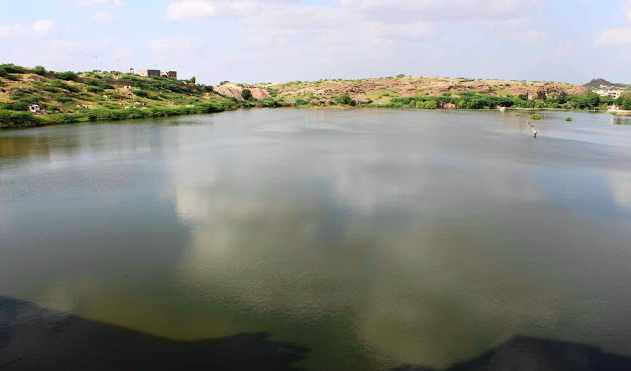

Raja Gaj Singh’s wife Bagheli Rani Kusum De built KusumdeSar, earlier called Kagari.
Rani Chandrawat Kashmir Devi repaired the Gangelao which was damaged due to heavy rain during Sur Singh’s reign. His paswan Anara built Anara ki Baori, Pardayat Sungandha built Sugandha Baori.
Rani Chandrawat Kashmir Devi repaired the Gangelao which was damaged due to heavy rain during Sur Singh’s reign. His paswan Anara built Anara ki Baori, Pardayat Sungandha built Sugandha Baori.
Maharaja Ajit Singh built many bawaris, inlcuding Dhay ki Bawari.
His queen Rani Badan Kanwar Jadeji built Jadeji Ji ki Jhalra, outside Chand Pol.
Jadeji Ji Ka Jhalra
His queen Rani Badan Kanwar Jadeji built Jadeji Ji ki Jhalra, outside Chand Pol.
Jadeji Ji Ka Jhalra
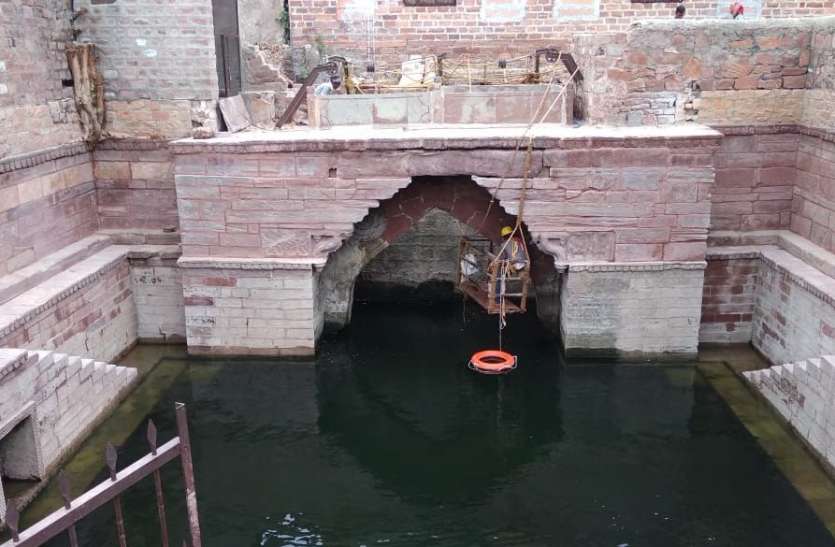
Maharaja Abhai Singh built well in Chokhelao, Abhay Sagar, Athpehlu Well, Dev Kund, Navlakha Well, Bhawani Kund,a Baori.
His wife Jai Kunwar Tanwar (Toorji) built Toorji Ka Jhalra, which is the most famous and most clicked Jhalra in #Jodhpur.
His wife Jai Kunwar Tanwar (Toorji) built Toorji Ka Jhalra, which is the most famous and most clicked Jhalra in #Jodhpur.
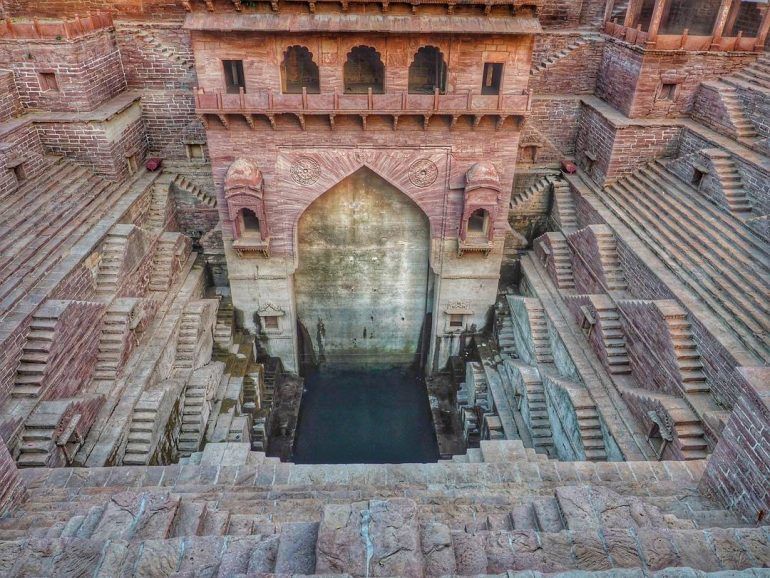
Maharaja Bakht Singh built BakhtSagar, outside of Jalori Gate, now its Nehru Udyaan.
Maharaja Vijay Singh’s paswan Gulabrai built Gulabsagar, Mayla Bagh Jhalra, Fateh Sagar, Raoti ka Talao.
GulabSagar (L), Mayla Bagh Jhalra (R)

Maharaja Vijay Singh’s paswan Gulabrai built Gulabsagar, Mayla Bagh Jhalra, Fateh Sagar, Raoti ka Talao.
GulabSagar (L), Mayla Bagh Jhalra (R)
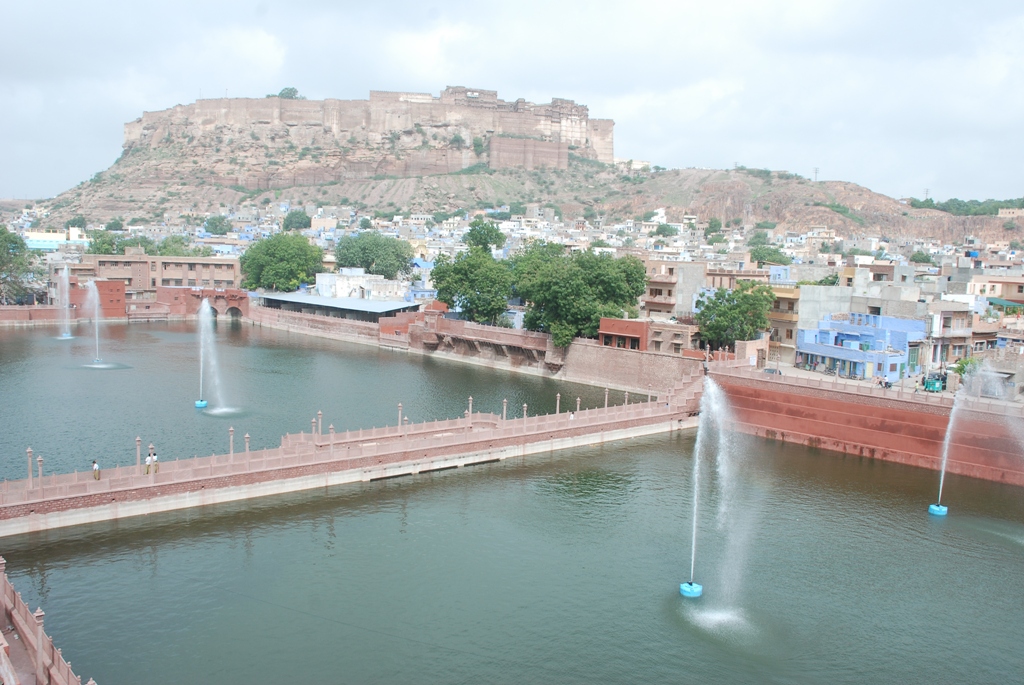
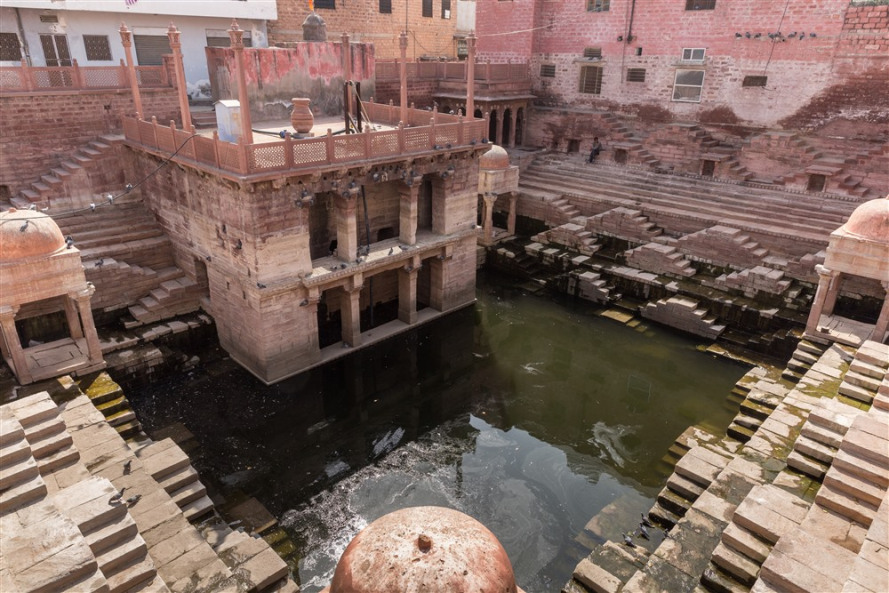
Maharaja Man Singh’s daughter Sire Kanwar built Bai Ji Ka Talao and the canals.
His queen Rani Devari Ejan Kanwar built Ejan Bawari near Raoti and Rani Bhatiyani Jas Kanwar built Panch Mamaji ki Baoari, near VidyaShala.
Old photo of dry Baiji ka Talao
His queen Rani Devari Ejan Kanwar built Ejan Bawari near Raoti and Rani Bhatiyani Jas Kanwar built Panch Mamaji ki Baoari, near VidyaShala.
Old photo of dry Baiji ka Talao
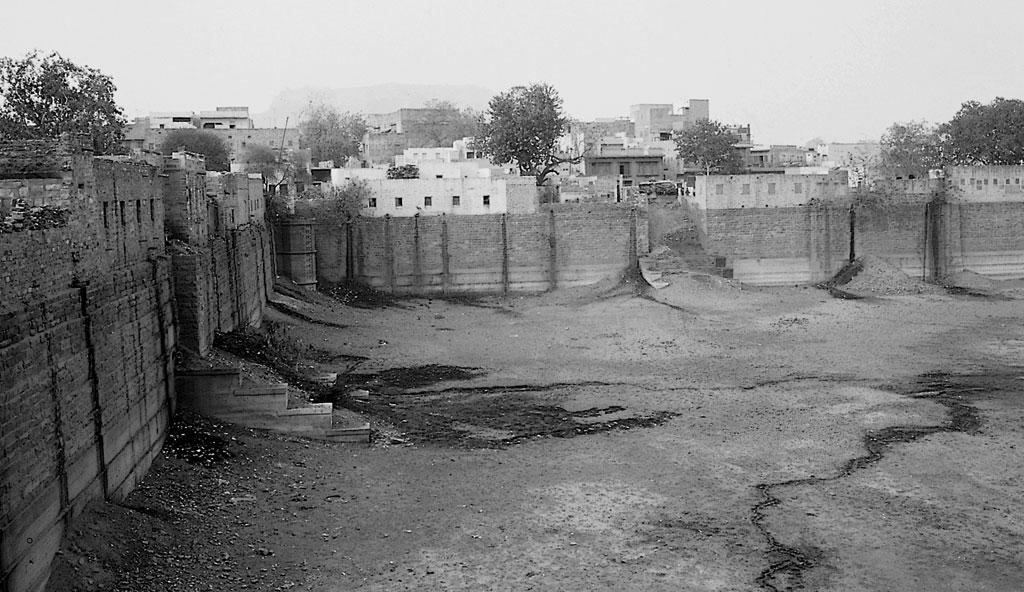
Maharaja Takhat Singh built canals for RaniSar, PadamSar, GulabSagar, FatehSagar.
Takhat Sagar, Kailana lake, Bijolai Talao and many Baoris were built during his regin.
His queen Chauhanji built Lal Sagar and Ranawat ji built well, now known as Khokariya ka Bera.
Kailana
Takhat Sagar, Kailana lake, Bijolai Talao and many Baoris were built during his regin.
His queen Chauhanji built Lal Sagar and Ranawat ji built well, now known as Khokariya ka Bera.
Kailana

During reign of Maharaja Jaswant Singh - II, Jodhpur is perhaps the only city in the country where an all-out effort was made to conserve every drop of rainwater. Balsamand was connected to city to bring water supply, he also built tank at Chopasni to meet the needs of the city.
To achieve this, every catchment and hillock was drained by canals, a network of which had swamped Jodhpur by 1886, total canal length of about 85 km.
Jaswant Sagar/ Pichiyak Dam was built in his reign with canals on each side of Luni River to distribute water Jaswant Sagar for irrigation purposes.
Due to famines, multiple famine relief programmes were launched during reign of Maharaja Sardar Singh and Sumer Singh. Multiple tanks and dams were built to save more water and also to provide irrigation.
Dams of Balotara, Bisalpur, Kairla, Chopra , Bankli, Kharda, Jograwas, Sadri , Hemawas, Bagol, Magartalao
Naya talab are to name a few.
Hemawas (L), Sadri-Ranakpur (R)

Naya talab are to name a few.
Hemawas (L), Sadri-Ranakpur (R)
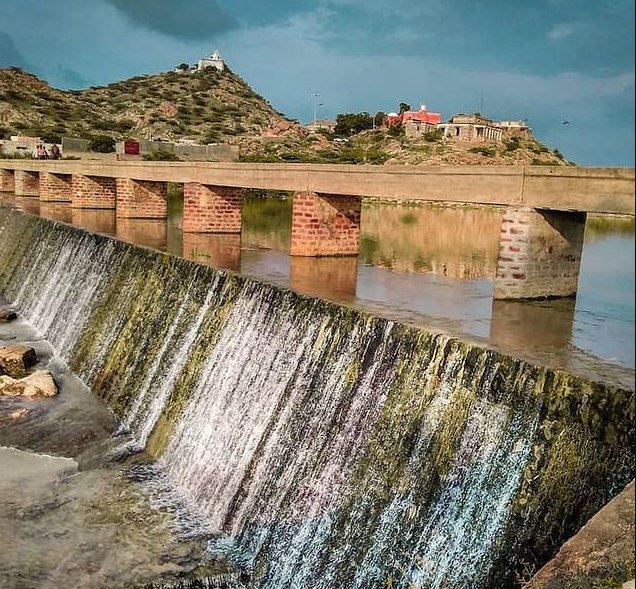
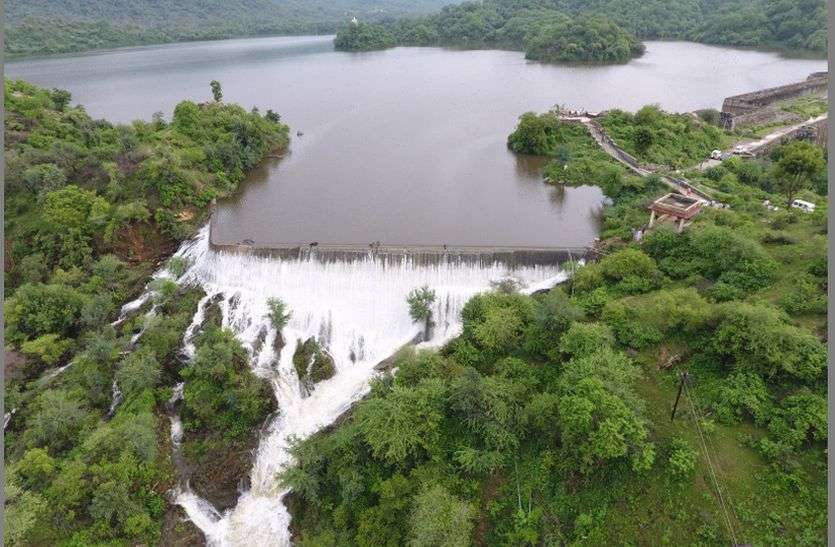
Maharaja Umaid Singh built Umaid Sagar in 1930. In 1944, laid down the foundation of Jawai Bandh and it completed in 1957. It is the biggest dam in western Rajasthan. Maharaja is still remembered by people of #Marwar.
As the song goes "मारवाड़ी राजा बँधो ज़ोर बँधायो सा"
As the song goes "मारवाड़ी राजा बँधो ज़ोर बँधायो सा"

Reference:
1.downtoearth.org.in/coverage/in-cr…
2. jstor.org/stable/4414565…
3. Muhnot Nainsi Ri Khyat
4. Jodhpur Rajya Ri Khyat
5. ManSingh Ri Khyat
6. TakhatSingh Ri Khyat
5. History of Rajputana, G.H.Ojha
6. History of Jodhpur, V.N. Reu
7. Report of Administration of Jodhpur State
1.downtoearth.org.in/coverage/in-cr…
2. jstor.org/stable/4414565…
3. Muhnot Nainsi Ri Khyat
4. Jodhpur Rajya Ri Khyat
5. ManSingh Ri Khyat
6. TakhatSingh Ri Khyat
5. History of Rajputana, G.H.Ojha
6. History of Jodhpur, V.N. Reu
7. Report of Administration of Jodhpur State
Another map showing traditional water management with feeder canals connected to various water bodies in and around #Jodhpur 
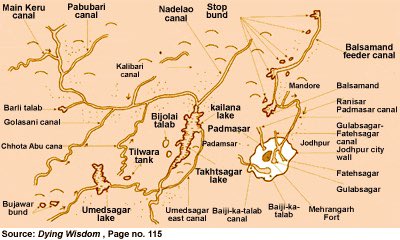
Map showing major water bodies and landmarks in and around old walled city of #Jodhpur . 

• • •
Missing some Tweet in this thread? You can try to
force a refresh

